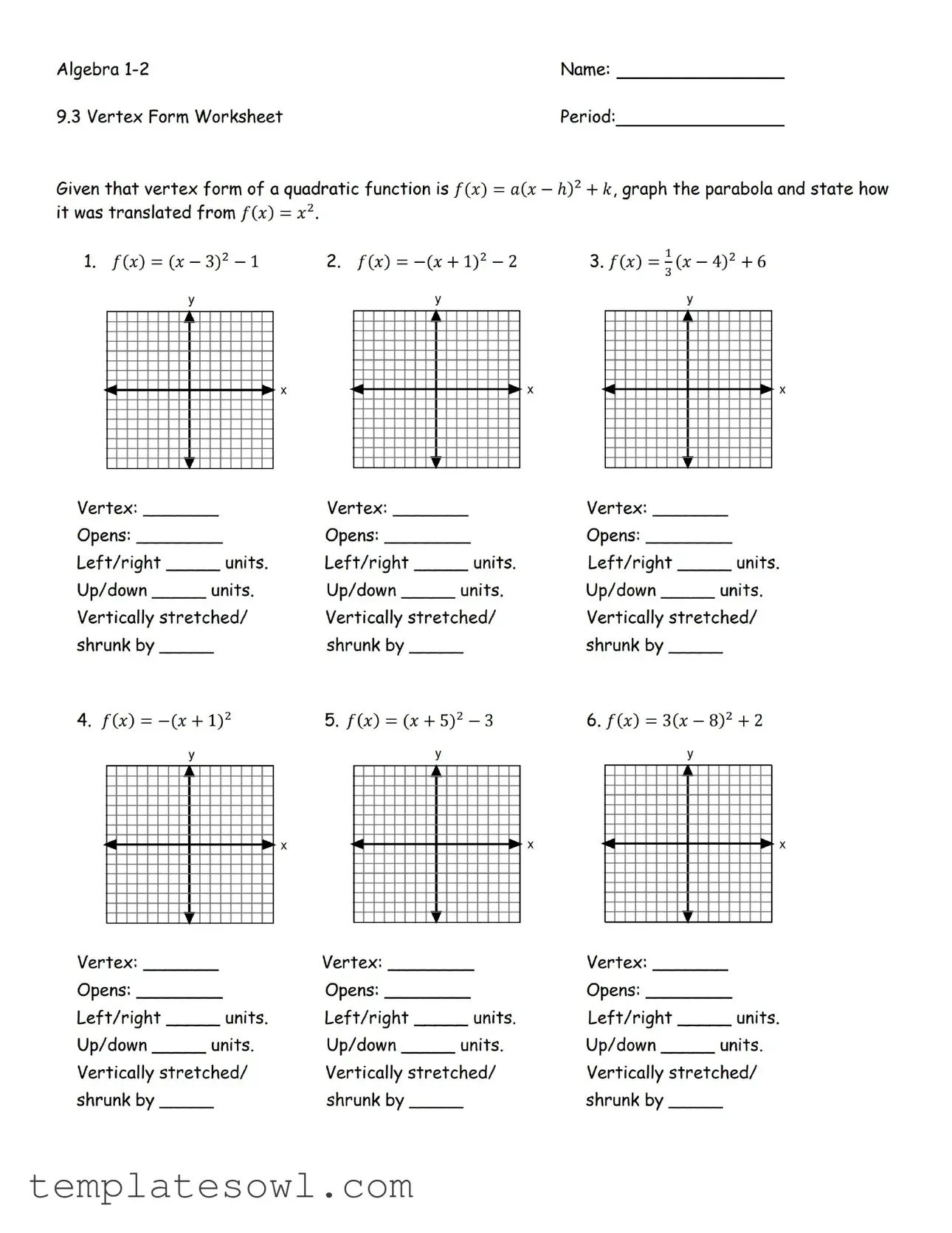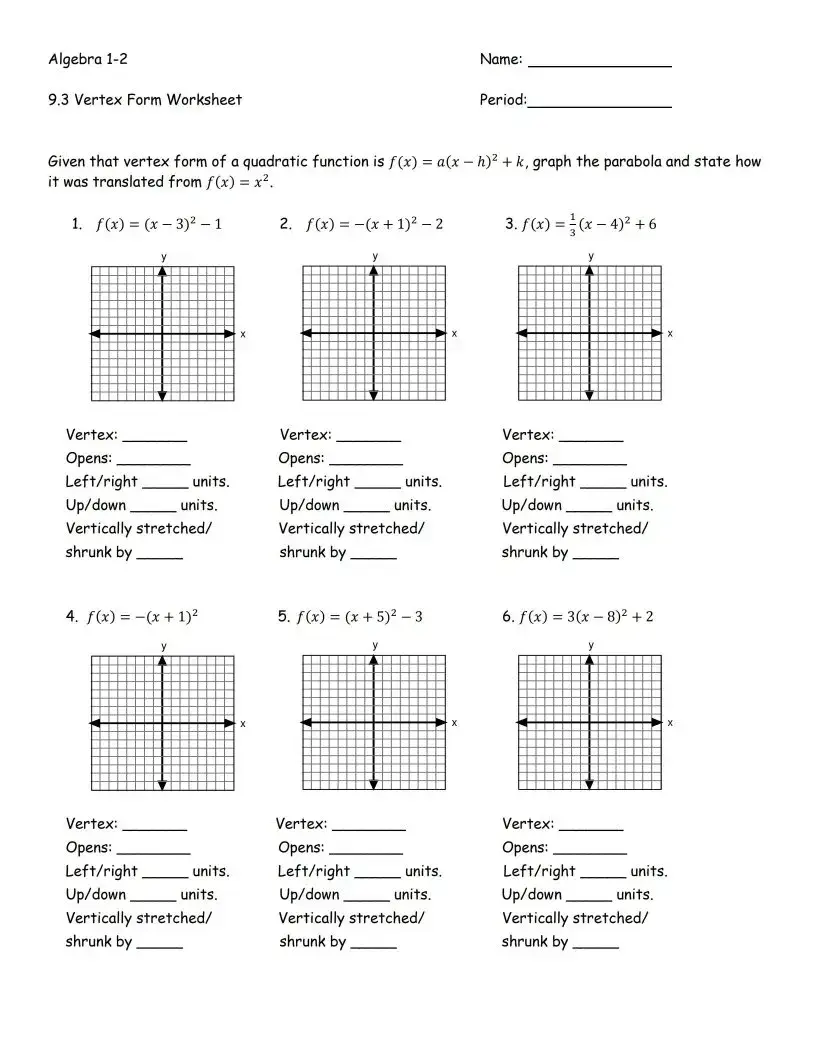What is the Parabola Form?
The parabola form refers to the way that a quadratic function can be expressed, typically in the format y = ax^2 + bx + c. In this equation, 'a,' 'b,' and 'c' are constants, and 'x' represents the variable. The resulting graph is a U-shaped curve called a parabola, which can open upwards or downwards depending on the value of 'a.'
What does the 'a' value determine in a parabola?
The 'a' value in the equation significantly impacts the direction and width of the parabola. If 'a' is positive, the parabola opens upwards. If 'a' is negative, it opens downwards. A larger absolute value of 'a' creates a narrower parabola, while a smaller absolute value makes it wider.
How do I identify the vertex of a parabola?
The vertex is the highest or lowest point of the parabola, depending on whether it opens up or down. You can find the vertex by using the formula x = -b/(2a) to calculate the x-coordinate. Once you have that, substitute the x-value back into the original equation to get the y-coordinate.
What is the significance of the axis of symmetry?
The axis of symmetry is a vertical line that runs through the vertex of the parabola, effectively dividing it into two mirror-image halves. For a parabola described by the equation y = ax^2 + bx + c, the axis of symmetry can be found using the same x-coordinate formula as for the vertex: x = -b/(2a).
Can a parabola be shifted horizontally or vertically?
Yes, parabolas can be shifted. To move a graph horizontally, you modify the x-value in the equation; for instance, y = a(x-h)^2 + k moves the graph right or left by 'h' units. Similarly, 'k' determines the vertical shift, moving the graph up or down. These adjustments allow customization of the parabola's position.
What is the impact of the 'b' and 'c' values?
The value of 'b' affects the position of the vertex along the x-axis and influences the slope of the parabola on one side versus the other. Conversely, 'c' represents the y-intercept of the parabola, indicating where the curve crosses the y-axis. Both values therefore play vital roles in shaping the parabola.
How do I determine the intercepts of a parabola?
You can find the y-intercept by simply setting x to 0 in the equation and solving for y. To find the x-intercepts, set y to 0 and solve the resulting equation (ax^2 + bx + c = 0) using methods such as factoring or the quadratic formula. These points provide important information about the parabola's intersections with the axes.
Why is understanding the parabola form important?
Understanding the parabola form is essential for recognizing its applications in various fields, such as physics, engineering, and economics. Knowledge of parabolas helps in analyzing motion, optimizing areas, and solving real-world problems effectively. Mastery of this concept is beneficial for students and professionals alike.

